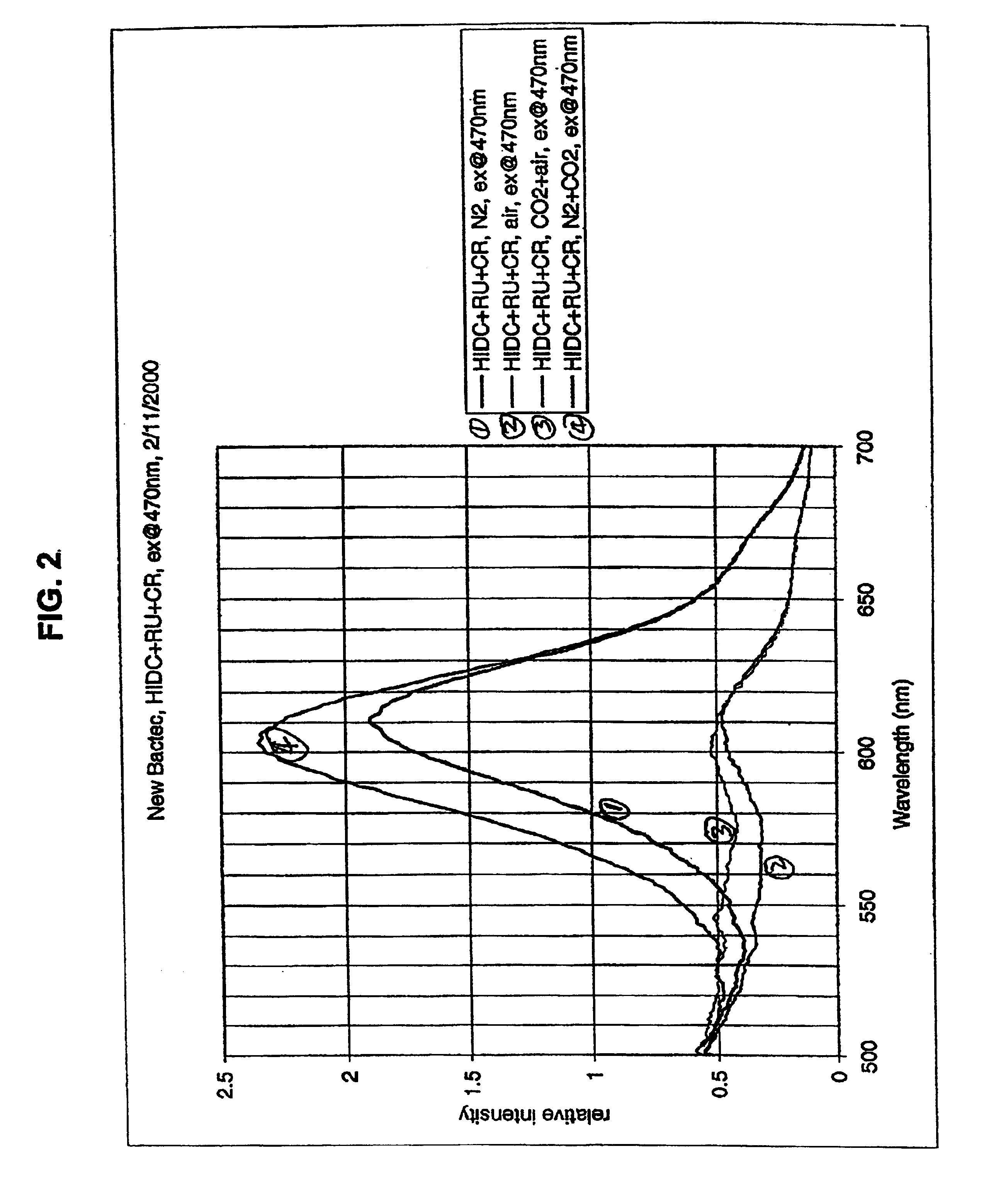Sensor formulation for simultaneously monitoring at least two components of a gas composition
a technology of gas composition and sensor formulation, which is applied in the direction of fluorescence/phosphorescence, instruments, and analysis using chemical indicators, can solve the problems of inefficiency in the commonly used monitoring methods, and requiring a long incubation period
- Summary
- Abstract
- Description
- Claims
- Application Information
AI Technical Summary
Benefits of technology
Problems solved by technology
Method used
Image
Examples
examples
[0028]The sensor formulation can be composed of a mixture of chromophore, fluorophores, and supporting inert materials A non limiting example of the novel sensor formulation of the present invention can include (a) tris(4,7-diphenyl-10-phenanthroline) ruthenium dichloride pentahydrate; (b) 1.1′,3,3,3′,3′-Hexamethylindodicarbobyanine iodide; (c) an acid-base indicator dye; (d) a silicon polymer; (e) a hydrogen-silicon compound; (f) a catalyst; and optionally (g) an inhibitor and a method for preparing the novel composition. Importantly, the selection of components of the novel formulation allows one of ordinary skill in the art to tailor the sensor system to provide a clear gas composition determination for each sample being tested. It is also important to understand that while the examples provided are directed to a sensor formulation and system, which can simultaneously detect O2 and CO2 levels in a gas composition, the formulation and system can be, if desired, expanded to include...
PUM
| Property | Measurement | Unit |
|---|---|---|
| concentration | aaaaa | aaaaa |
| density | aaaaa | aaaaa |
| polymeric | aaaaa | aaaaa |
Abstract
Description
Claims
Application Information
 Login to View More
Login to View More - R&D
- Intellectual Property
- Life Sciences
- Materials
- Tech Scout
- Unparalleled Data Quality
- Higher Quality Content
- 60% Fewer Hallucinations
Browse by: Latest US Patents, China's latest patents, Technical Efficacy Thesaurus, Application Domain, Technology Topic, Popular Technical Reports.
© 2025 PatSnap. All rights reserved.Legal|Privacy policy|Modern Slavery Act Transparency Statement|Sitemap|About US| Contact US: help@patsnap.com


